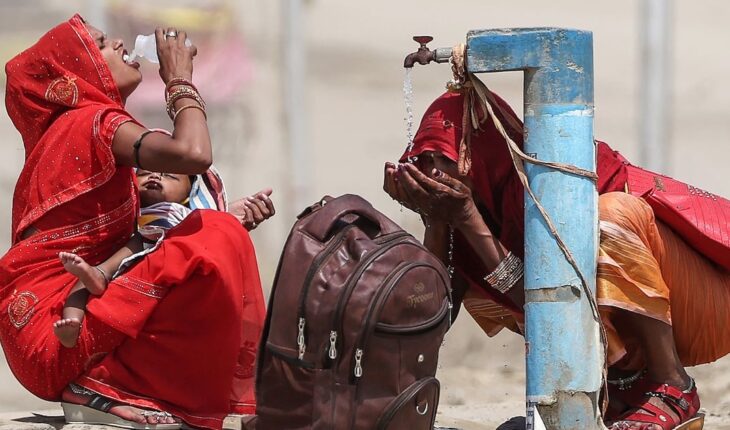
A little under a decade ago world leaders committed to try and cap global heating at no more than 1.5 degrees Celsius above pre-industrial levels — a limit beyond which scientists say the risks of hitting catastrophic climate tipping points significantly worsen.
Increasingly, that target looks unattainable. This year is set to be the hottest on record, and the first to breach the 1.5℃ goal, according to the EU’s Copernicus Climate Change service.
The target — negotiated in a landmark deal at the UN’s 2015 COP climate summit in Paris — is a long-term average rather than something to be judged by a single year, but forward-looking projections are bleak. Based on countries’ current emission-reduction plans, temperatures are expected to peak this century at between 2.1℃ and 2.8℃ above pre-industrial levels, according to a report released last month by UN Climate Change. While 1.5℃ was always a stretch goal, a more than2℃ rise could be dire, say scientists.
“Greenhouse gas pollution at these levels will guarantee a human and economic trainwreck for every country, without exception,” UN Climate Change’s executive secretary Simon Stiell said in October, when the organisation published its emissions forecasts. “Every fraction of a degree matters, as climate disasters get rapidly worse.”
Already weather extremes from deadly heatwaves to storms and floods are causing chaotic disruptions from which fashion is far from immune.
Efforts to get things back on track at this year’s COP over the last two weeks have been fraught. They’ve taken place in the shadow of America’s re-election of Donald Trump, who’s vowed to pull the world’s largest economy out of the Paris Agreement. Marathon negotiations to settle on a new deal to finance climate action and pave the way for more ambitious emissions-reduction plans are down to the wire. Officially due to come to a close Friday, talks are expected to overrun.
What does this mean for fashion?
Many of fashion’s manufacturing hubs are situated in the world’s most climate vulnerable countries, like Bangladesh and Vietnam. In 2022, deadly floods in Pakistan — one of the world’s largest cotton producers — wiped out around 40 percent of that year’s crop. A searing heatwave that blazed over South Asia for months this spring sent temperatures so high that machines in some factories stopped working, air conditioning units overheated and water coolers ran out of water.
“Even for me, knowing the science, I didn’t expect these kind of massive heat waves so fast,” said Vidhura Ralapanawe, a climate scientist and head of sustainability and innovation at Hong Kong-based apparel sourcing and supply chain management business Epic Group. “2023 and ‘24 really floored me.”
Unexpected weather extremes also mess with consumer habits, shifting how, when and what people shop for. And the more the world heats, the bigger these risks become. The cost to the industry by the end of the decade is expected to reach many billions of dollars.
Nonetheless, fashion is lagging on its climate commitments and sustainability is sliding down executives’ priorities amid a dizzying array of other geopolitical and economic challenges buffeting the industry. Many companies are more focused on next quarter’s numbers and haven’t properly quantified their exposure to climate risk — which goes a long way towards explaining how we ended up in this mess to begin with.
Change isn’t easy. Reducing fashion’s planet-warming emissions requires costly changes in the supply chain, where most businesses operate on razor thin margins in volatile markets that leave little room for long-term investments. Factories need to be cooled, but air conditioning is both costly and carbon intensive (it’s a “carbon bomb” waiting to go off, said Ralapanawe). And at a fundamental level, fashion’s raison d’etre — making and selling more products — is in conflict with climate goals.
“Business models are not changing between now and 2030,” said Betsy Blaisdell, manager of environmental stewardship at consultancy Guidehouse. “Everybody is still producing more stuff. That is always the elephant in the room; companies have not figured out how to grow without producing more stuff.”
The tensions in industry are a microcosm of the conflicts playing out on a global stage at COP this week. But if an increase of 1.5℃ is bad for business, further heating will be much worse.
“We still need to run to net zero even faster than we did,” said Ralapanawe. “This is not negotiable.”





